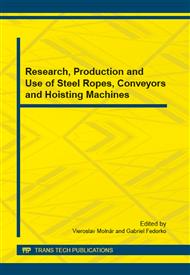p.119
p.125
p.130
p.135
p.142
p.147
p.153
p.159
p.165
Influences of Surface Determination for Measurements Obtained by Industrial Computed Tomography
Abstract:
At present emphasis is placed on input or output control of products in the manufacturing process. One of the criteria is the dimensional analysis or porosity analysis of products. In the case that products are of complicated shapes, or measurements are to be taken in places which are not accessible to standard measuring devices (manual measurements, coordinate measuring machines) the use of computed tomography is one of the possibilities for obtaining the desired dimensions. These technologies work with digital data and therefore the surfaces which are to be assessed must be created on the basis of determined criteria. Surface determination is one of the most important settings during the evaluation of the visual shape (state) of a surface and assessing dimensions. During such evaluation this is the main parameter which globally influences the precision of the obtained data. In the case of an unsuitably determined surface the obtained results can vary from reality even by several tenths of a millimeter depending on the scanned object and the scanning conditions. The conveyor belts are composed of two or more materials with different densities, such as rubber and textile fibers. In cooperation with Faculty of Mining, Ecology, Process Control and Geotechnology is tested and evaluated the effect of the impactor with various energy into conveyor belt. The correct surface determination for selected material is necessary to evaluate the dimensions, the damage and pores. The article deals with the impact of surface determination on the result of a measurement.
Info:
Periodical:
Pages:
142-146
Citation:
Online since:
October 2014
Authors:
Keywords:
Price:
Сopyright:
© 2014 Trans Tech Publications Ltd. All Rights Reserved
Share:
Citation:


